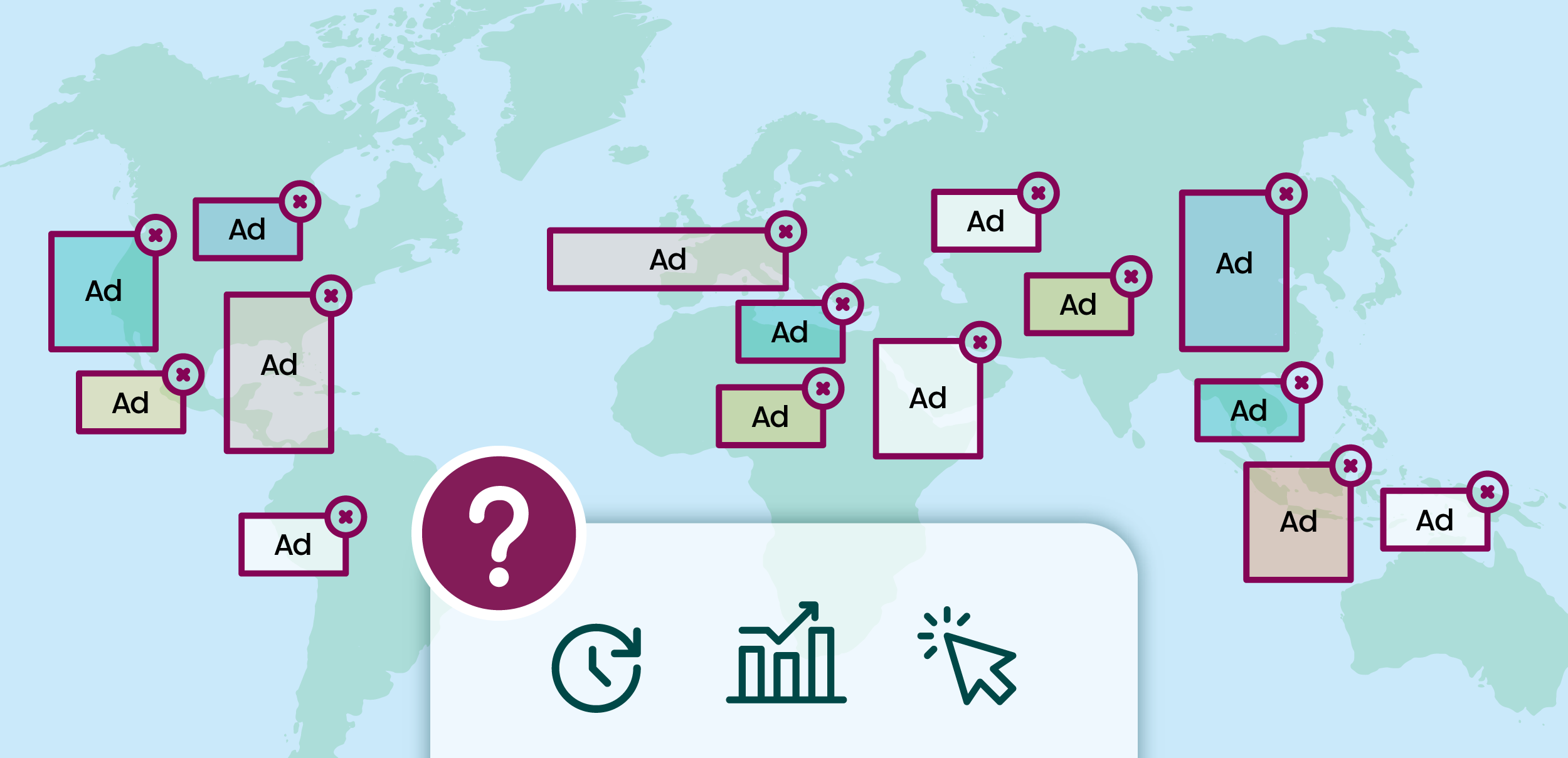We Now Know What Ad Was Served. We Still Don’t Know if it Mattered.
By Lior Fisher | July 13, 2025

The road to measuring digital advertising is long (and winding, hey McCartney)
At some point, we started confusing what’s countable with what counts.
We count impressions – even though they can be generated by auto-refreshed slots long after the user has tuned out.
We count viewability – even when it only means half an ad was in view for one second, which doesn’t tell us if it was really seen.
We measure time-in-view – without asking what else was competing for attention during those seconds.
We monitor creative fatigue – based on how long an asset has been running, not whether anyone’s actually seen it.
We report on engagement – but only when it ends in a click, ignoring signals like scrolling, cursor movement, or lingering.
We score for brand safety – even though an ad can appear in “safe” content and still be completely irrelevant, buried in clutter, or ignored in a broken layout.
We count inventory quality – using crawled snapshots from bots, even though what users actually see is dynamic, personalized, and constantly changing.
And we rarely account for layout – how many ads appeared in the same fold, how dense the page was, or whether the environment gave the ad any room to breathe.
When the basics of ‘who saw what?’ are muddy, any step toward clarity matters.
Which is why the IAB Tech Lab’s recent attempt to bring order to creative tracking – the launch of the Ad Creative ID Framework (ACIF) – deserves a closer look.
A Creative Step Forward
ACIF is a new technical standard designed to clean up one of the messier corners of programmatic advertising: creative asset tracking.
In today’s supply chain, a single creative might be resized, renamed, and re-hosted dozens of times across platforms.
That makes it nearly impossible to track how it performs in different environments.
ACIF solves this by assigning each creative a persistent, interoperable ID that travels with it across systems, vendors, and delivery paths.
The goal: enable more transparency, better frequency control, policy enforcement, and cross-platform creative analytics.
It’s a technical upgrade with real operational value.
And it signals a broader push toward accountability in how ads are delivered and reported.
But it also brings us back to an old question:
𝗪𝗵𝗮𝘁, 𝗲𝘅𝗮𝗰𝘁𝗹𝘆, 𝗮𝗿𝗲 𝘄𝗲 𝗺𝗲𝗮𝘀𝘂𝗿𝗶𝗻𝗴 – 𝗮𝗻𝗱 𝘄𝗵𝗮𝘁 𝗮𝗿𝗲 𝘄𝗲 𝗺𝗶𝘀𝘀𝗶𝗻𝗴?
Because it’s one thing to know what ad was served.
It’s another to understand whether it had a real shot at working.
From Inventory to Attention
Creative IDs are a step forward – no question.
They help us keep better records.
But they don’t explain why an ad worked – or why it didn’t.
They don’t tell us what else was on the screen.
Whether the user was active.
Or if the ad was one of five crammed into the same fold.
They tell us what was served.
They don’t tell us whether it mattered.
And yet, what we call “optimization” still mostly revolves around logistics.
We shuffle bids.
Rotate creatives.
Cap frequency.
All without asking:
What did the user actually experience?
Were they scrolling fast?
Were they reading intently?
Was the ad placed in a part of the screen that draws attention, or one that’s consistently ignored?
The truth is, people don’t experience ads in the abstract.
They experience them in context – within a layout, during a moment.
Too much clutter? Even the best creative disappears.
Too many refreshes? The value of each impression erodes.
Too many ads per fold? None of them stand out.
We can’t measure that complexity with IDs alone.
We need signals that reflect human behavior – in context.
What ACIF Fixes – And What it Doesn’t
Let’s give credit where it’s due.
ACIF helps fix real issues in digital advertising:
– It brings consistency to creative tracking across platforms and vendors.
– It makes it easier to detect overuse or duplication.
– It supports enforcement-like identifying and blocking rebranded banned ads.
– It allows marketers to better manage creative versions and performance over time.
That’s valuable infrastructure.
But infrastructure is not insight.
What we need is a new layer.
One that helps us understand the experience of the ad – where it lived, how it competed, and whether it had space to breathe.
A Better Definition of Quality
We need to move beyond impressions and placements and start measuring attention.
We need to stop asking, “Was it viewable?”
And start asking, “Was it viewable in a way that matters?”
That means accounting for:
– Time in view, not just whether the timer started.
– Refresh behavior, and how it inflates exposure without increasing impact.
– Engaged users, not just passive presence.
– Ad density and clutter, and how they shape the entire visual environment.
– Context, not just content.
Creative IDs can tell us what ran.
But until we pair them with behavioral signals – real ones, not proxies – we’re still guessing at quality.
The question we need to start asking is simpler -and harder:
Did the ad even stand a chance?
Latest Articles
-

Visibility Multiplies – But Only If You Measure What Matters
Visibility doesn’t guarantee impact. New research reveals that mentions (not backlinks) drive visibility in AI search, and the same principle applies to media performance. When advertisers focus on attention and context, visibility doesn’t just show up—it multiplies.
View Now -

You Get What You Surface: How GPT-5 Exposed the Quiet Power of Defaults
The GPT-5 rollout quietly exposed how much defaults shape trust, perception, and engagement. When technology changes without context, even progress can feel like loss. In AI and advertising alike, it’s a reminder that the way we present intelligence — not just how we build it — determines what people understand, value, and believe.
View Now -

What Sales Got Right About Competitive Intelligence – and Why It’s Time for Advertisers to Catch Up
In sales, competitive intelligence became second nature — the reason teams know why deals were won or lost. Advertisers, on the other hand, are still optimizing in the dark. It’s time to bring the same discipline to marketing, and finally see beyond surface-level metrics.
View Now
